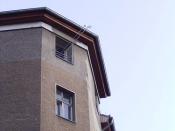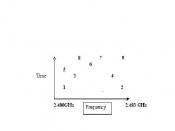Wireless LAN Technology is a growing area in 21st Century business. The purpose of this essay is to provide an overview and explore several different types of wireless technology available on the market today. Wireless is rapidly gaining in popularity for both home and business networking. Wireless technology continues to improve, and the cost of wireless products continues to decrease.
Overview:
A wireless LAN or WLANs, uses wireless technology to allow computers to communicate. A WLAN can be either an extension to a current network, or an alternative to a wired network that uses traditional media. Use of a WLAN adds flexibility to networking. A WLAN allows users to move around in a building and maintain computer connections wherever they are, without depending on wiring that restricts their range of motion.
WLANs provide all the features of wired LANs, but without the wires. The only difference to the user is speed, which ranges from 1 to 54Mbps.
WLANs can cover areas ranging in size from a small office to a large campus. Most commonly, WLANs employ access points that provide access within a radius of 65 to 300 feet. Many companies are developing WLAN technology.
WLANs use high- frequency radio waves rather than wires to communicate between nodes. Currently employed methods of wireless data transmission are described below.
Narrow-band technology:
Narrow-band radio receives and transmits user information on a specific radio frequency. Narrow-band radio keeps the radio signal frequency as narrow as possible just to pass the information. Undesirable crosstalk between communications channels is avoided by carefully coordinating different users on different channel frequencies.
Spread Spectrum technology (SSR):
In performing Spread Spectrum, the transmitter takes the input data and spreads it in a predefined method. Each receiver must understand this predefined method and de-spread the signal before the data can...


